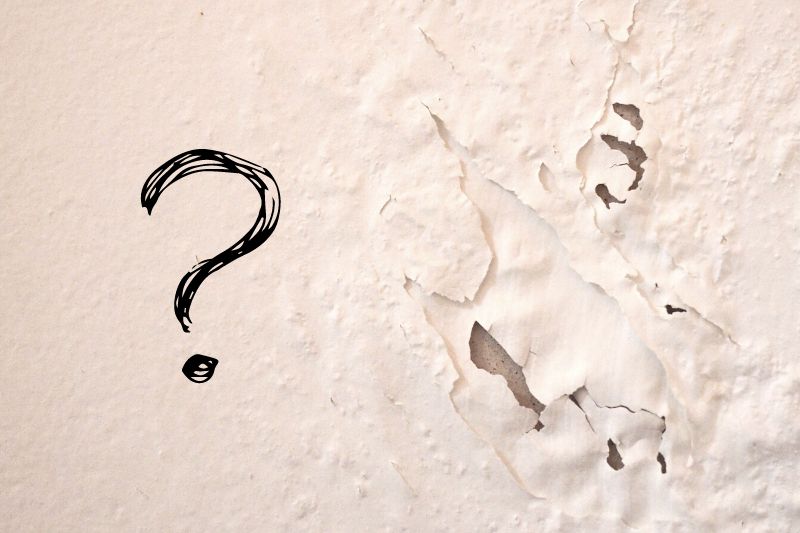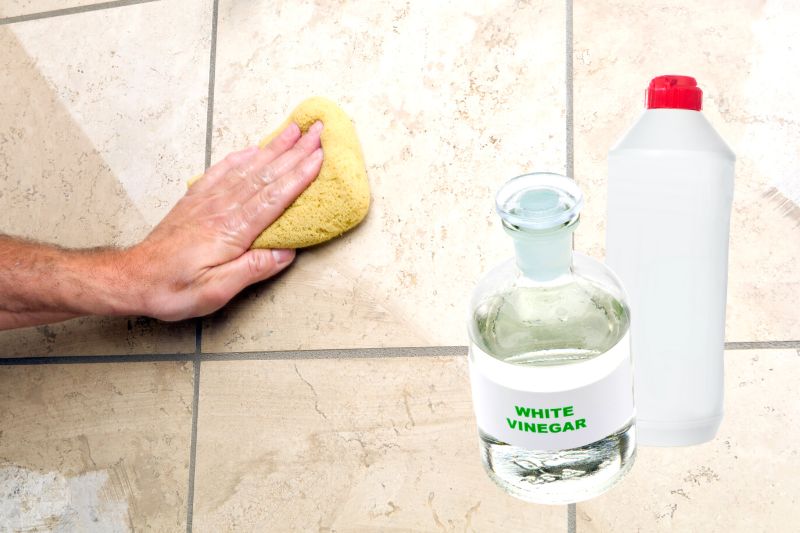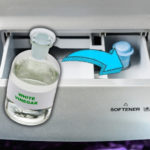We don’t realise just how dirty walls can get until they become discoloured and marks start appearing.
Some of our walls are high traffic areas, such as the hallway by the front door and doorways. This means that we come into contact with them more than other walls.
Even walls that we don’t touch very often can become dusty and grimy. This is why it’s important not to forget your walls in your cleaning routine.
Luckily, you can use two household cleaners you probably already have on hand: vinegar and fabric softener.
Read on to find out how to use vinegar and fabric softener to clean walls.
Will Fabric Softener and Vinegar Damage Walls?

It’s usually safe to apply diluted fabric softener to your walls without any risk of damage. Fabric softener will not strip paint or wallpaper and will even help restore grubby walls and doors back to a bright white.
The same applies to diluted vinegar: it won’t have a stripping effect and it will help brighten up white walls that have become a little worse for wear over time.
However, it’s best to always check the label of your fabric softener as some can be flammable. Be sure to always rinse well after washing, just in case.
Before applying any cleaning to the whole of a wall, it’s best to test it in a small, inconspicuous area first to see if it has an adverse effect.
How to Clean Walls with Vinegar and Fabric Softener

You can use a homemade solution of fabric softener and vinegar to clean your walls efficiently.
Mixing fabric softener with vinegar also helps to mask the smell of vinegar and will leave your rooms smelling clean and fresh.
Follow the steps below:
- Add equal parts vinegar and fabric softener to water. Use a ratio of about two cups of each to one bucket of water.
- Add the mixture to a spray bottle. Alternatively, add the mixture to your mop bucket.
- Make sure to do a patch test first and spray the mixture onto a part of the wall that is less visible to make sure it doesn’t leave a mark.
- Brush the wall down with a dry cloth or soft bristle brush to remove any dirt or dust.
- Spray the mixture directly onto your walls and wipe them with a cloth. If using a mop, soak the mop in the solution and mop the walls.
- You don’t have to rinse off the mixture as the fabric softener deodorises the vinegar, so the smell shouldn’t be unpleasant. However, if you’re unsure whether your fabric softener is flammable, you may want to rinse the mixture off with a clean cloth and clean water.
- You can also clean your skirting boards with this mixture.
- Leave to dry by opening windows and doors to encourage airflow in the room.
What Should Not Be Washed with Fabric Softener or Vinegar?

If you got great results with your homemade wall-cleaning solution, so might want to use it on everything.
But before you go spraying your new mixture around the house, make sure that you’re not using it on one of the materials that can be damaged by these ingredients.
Avoid using fabric softener on natural fibres such as linen curtains or wool rugs. Fabric softener can build up in the tiny holes in woven fabrics which restricts air flow and weighs the fabrics down. Eventually leading to damage.
Avoid using vinegar on stone surfaces such as marble or granite, which can be found in the kitchen. Vinegar corrodes, and as such, dulls these surfaces.

In The Wash is your guide to the best laundry and cleaning products, tips and tricks. Our mission is to solve the UK’s cleaning and laundry dilemmas!






